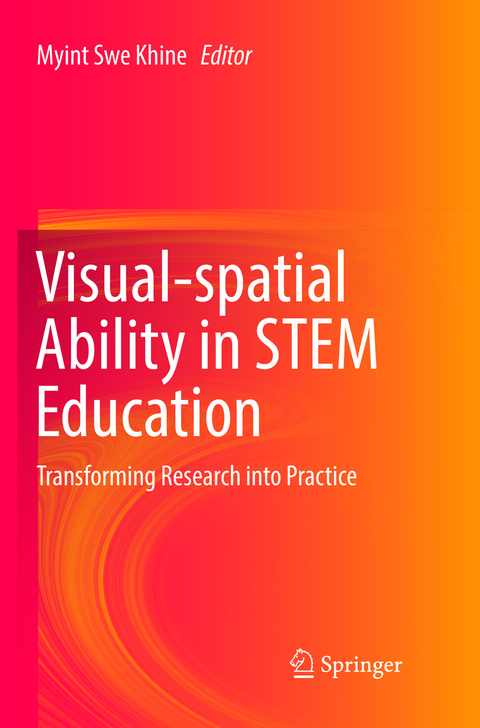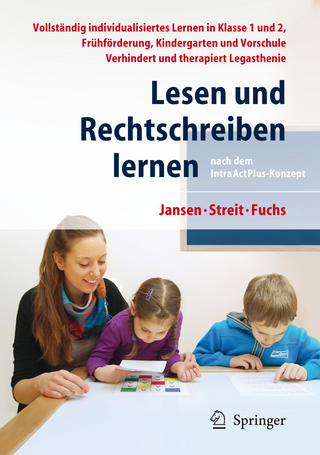
Visual-spatial Ability in STEM Education
Springer International Publishing (Verlag)
978-3-319-83045-2 (ISBN)
Dr. Myint Swe Khine is a Professor and Chair of Assessment and Evaluation Centre, Emirates College for Advanced Education, United Arab Emirates and Adjunct Professor at the Science and Mathematics Education Centre, Curtin University, Perth, Australia. He obtained Master degrees from the University of Southern California, Los Angeles, USA and University of Surrey, Guildford, UK, and Doctor of Science Education from Curtin University, Australia. Before joining ECAE, he worked at the National Institute of Education, Nanyang Technological University in Singapore. He has published widely and edited books on science education. Recent book Science Education in East Asia: Pedagogical Innovations and Research-informed Practices is published by Springer in 2015.
PART I Introduction.- Chapter 1 Spatial Cognition: Key to STEM Success, Myint Swe Khine.- PART II Measurement and Development of Spatial Ability.- Chapter 2 Validity of Spatial Ability Tests for Selection into STEM (Science, Technology, Engineering, and Mathematics) Career Fields, Laura G. Barron, Mark R. Rose, & James Johnson, Thomas R. Carretta.- Chapter 3 Spatial Ability: Measurement and Development, Rita Nagy-Kondor.- Chapter 4 Measuring Spatial Visualization: Test Development Study, Nazan Sezen Yuksel.- Chapter 5 Investigating Individual Differences in Visuo-Spatial Ability: Research Paradigms and Methodologies, Lu Wang.- PART II Research and Practices in Spatial Ability.- Chapter 6 What Innovations Have We Already Lost? : The Importance of Identifying and Developing Spatial Talent, Jonathan Wai, Harrison J. Kell.- Chapter 7Empowering Visuo-spatial Abilities among Italian Primary School Children: From Theory to Practice, Chiara Fastame.- Chapter 8 The Improvement of Spatial Ability: Do We Measure What We Intend to Measure? Yi-Ling Cheng.- Chapter 9 Mediator role of Information and Communication Technologies (ICTs) in Spatial Thinking, Melih Turgut.- Chapter 10 Visuospatial Working Memory as a Part of Information-Processing System - A Modifiable Resource behind Academic Learning? Minna Kyttälä.- Chapter 11 Gender Differences in Visual-spatial Ability and Their Implications for STEM-fields, David Reilly & David Neumann, Glenda Andrews.- Chapter 12 Ranking and Predicting Results for Different Training Activities to Develop Spatial Abilities, Jorge Martín-Gutierrez.- Index.
"The eleven entries are divided in two sections, the first focusing on measurement and development of spatial ability, and the second on research and practice. ... Visual-spatial Ability in STEM Education: Transforming Research into Practice is a good read for those interested in spatial reasoning research, for mathematics educators wanting to make an impact on children's development of spatial reasoning, and for all who work with STEM students and programs." (Cindia Davis Stewart, MAA Reviews, maa.org, July, 2017)
| Erscheint lt. Verlag | 11.7.2018 |
|---|---|
| Zusatzinfo | VI, 263 p. 72 illus. |
| Verlagsort | Cham |
| Sprache | englisch |
| Maße | 155 x 235 mm |
| Gewicht | 421 g |
| Themenwelt | Geisteswissenschaften ► Psychologie ► Pädagogische Psychologie |
| Medizin / Pharmazie ► Medizinische Fachgebiete ► Psychiatrie / Psychotherapie | |
| Schlagworte | Engineering Education • mathematics education • Measurement • science education • spatial ability • Spatial Cognition • Spatial Reasoning • spatial skills • spatial training • Spatial Visualization • STEM Education • Technology Education • Test Development • visual cognition |
| ISBN-10 | 3-319-83045-7 / 3319830457 |
| ISBN-13 | 978-3-319-83045-2 / 9783319830452 |
| Zustand | Neuware |
| Informationen gemäß Produktsicherheitsverordnung (GPSR) | |
| Haben Sie eine Frage zum Produkt? |
aus dem Bereich


